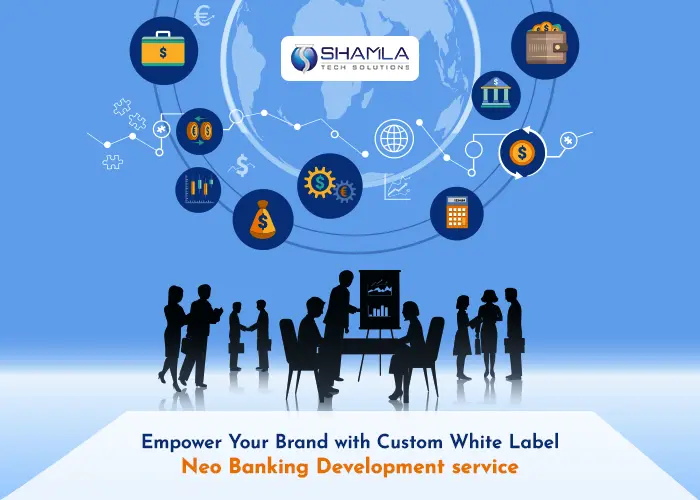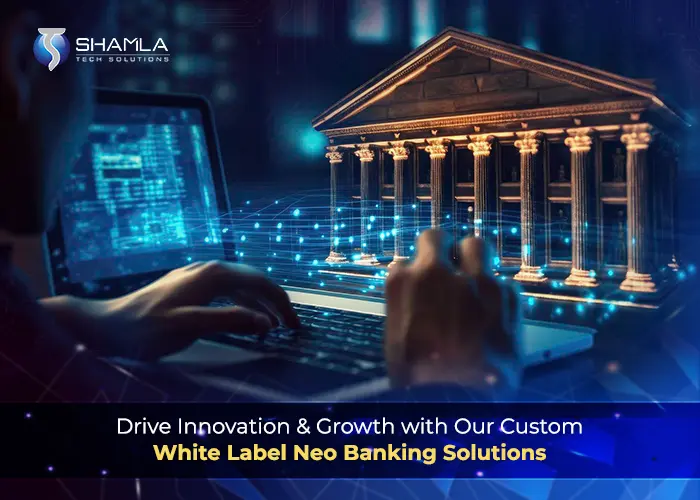What is Neo banking platform?
A technology business that offers customizable banking software to digital banks is known as a white-label neo-banking development software platform provider. The term “white-label” describes contemporary bank software that provides its products as a service under the bank’s name that customers may subscribe to.
Using the technology and infrastructure of the solution providers, banks, fintech companies, and other organizations may provide financial services to their customers without having to build the entire infrastructure from the ground up.
Working with white-label neo-bank software gives the third-party company access to a ready-to-use banking platform that can be tailored and rebranded to match its own brand identity. The solution provider is in charge of technology operations and security compliance, while the neo bank is in charge of regulatory compliance, customer experience, branding, and client acquisition.
It also makes it possible for non-banking and traditional banks to maintain their current clientele and reputation while gaining access to the cutting-edge, customer-focused features of neo-banks.
What are the 7 steps to start a NeoBank from scratch?
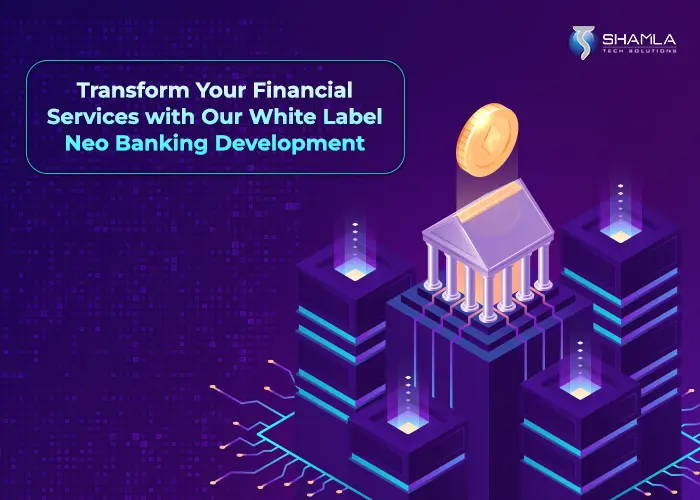
Neo banks, which focus primarily on deep tech and client centricity, fill the experience gap that exists between traditional banking services and changing customer expectations. Neo banks use sophisticated, flexible, and lean business models to provide incredibly quick, mobile-first services, free from the constraints of old technology, intricate value chains, and strict regulatory restrictions.
The worldwide white-label neo banking development market is expected to develop at a rate of 47.1% over the next five years, reaching a market value of $333.4 billion. Neo banks are a growing sector in India as well, where there is a sizable unbanked and underbanked population of over 190 million that still require access to basic financial services.
Thus, it is the perfect moment for you to enter the neo banking sector if you want to. Here we present you a step by step guide onto the same;
- Define the target market and it’s value proposition;
For specialized markets, neo banks upend the established models of banking and payments. Determining that target market is therefore essential for white label Neo Banking Development.
Neo banks such as Zenpay serve blue-collar workers, while FamPay caters to youngsters. The products offered by FamPay include bank accounts and cards that minors may use with parental supervision. On the other hand, Zenpay provides payroll cards that provide blue-collar workers immediate access to their pay and benefits.
To create a value proposition that addresses the needs of your target audience, you must have a thorough grasp of their demographics and pain concerns. This will assist you in formulating a compelling argument for your clients to pick you.
- Identify and analyze audience pain points:
Determine and evaluate the needs and pain points of your target audience when it has been properly defined. With this knowledge, you can incorporate features that address concerns raised by the audience, foster trust, and draw in the suitable clientele for your business. For instance, the introduction of Zenpay coincided with a period in which blue-collar workers were underbanked, unable to access their income or keep tabs on their expenses. For Zenpay’s audience, the main source of suffering was financial exclusion, namely the inability to access wage accounts. And they attempted to address the situation with their services and value offer.
One of the most important steps in setting up a neo bank is to consider the pain issues of your target audience and try to fill in the gaps. This information will enable you to set yourself out from the competition.
- Build a strong core and backend infrastructure:
Backend infrastructure, a tech stack, frameworks, and architecture are among the key components that must be chosen in order to create a neobanking app that is both safe and scalable. Here, developers with fintech-related knowledge and expertise may be of great use.
The following considerations are made by Uptech engineers while choosing a backend tech stack:
- The characteristics of the product (such as its kind, size, complexity, and commercial aim)
- The project’s budget and schedule;
Taking into consideration the aforementioned aspects, we select the tech stack that is most appropriate for your product.
Research and communicate with a BaaS provider:
The next action item on your list is to locate a trustworthy BaaS supplier. Okay, so what exactly is BaaS, you ask? A BaaS is a financial services provider that typically collaborates directly with banks. Neobanks can allow customers to retain money, make loan payments, handle cash flow, pay invoices, and get financing right from the program by utilizing BaaS APIs.
The BaaS APIs listed below are those I suggest using:
- Solidfi
- Bond
- Unit
- Galileo
- Treasury Prime
- OpenPayd
- Group Solaris
Technical study is essential to understand the terms of your possible BaaS provider and determine whether they meet your needs. For instance, the BaaS you selected lacks the capability to provide a cryptocurrency account and to have KYC incorporated.
Thus, carefully review the agreements before formalizing your partnership with BaaS. It’s time for your neobank to formally offer financial services, therefore spell out every facet of your partnership in detail.
- Ensure compliance and security:
Nowadays, neobanks are usually not subject to direct regulation. The regulated institution is the bank that the neobank is collaborating with. The examiners oversee the partner banks. These partner banks will have to demonstrate that they adhere to specific security protocols and standards in order to pass regulatory examinations and audits.
The partner bank functions as a kind of quasi-regulator for the neobank as it requires the neobank to abide by its requirements. You may get assistance from your BaaS provider and a toolkit to help you create an excellent compliance program.
- Focus on the user-friendly design:
It’s likely a poorly designed software if you open a banking app and are scared to transfer money. For what reason is it the case? Because banking applications need to make things easier and more relatable rather than intimidate customers.
Is there a tried-and-true formula for designing neobanking apps?
Not really. But it’s possible to distinguish between poorly designed and well-designed neobanking apps. A well matched UX and UI define good design. And in order to produce an amazing app that users will like, you actually need to work with a skilled UX/UI designer to nail both. The UI should have attractive colors and legible typography, and the overall style should be established by other app parts. The ultimate purpose of user experience is to maintain user engagement.
- Easy onboarding and go-to-market strategy:
Although they are theoretically the last phases in the creation of a neobanking software, onboarding, user engagement, and marketing are frequently the ones that startup founders and company owners miss the most.
Since developing a fintech product entails handling sensitive client data, it’s critical to consider how to make the neobank app as simple to use, intuitive, and user-friendly as possible. Next, develop your go-to-market and onboarding tactics to support it.
Can I start a Neo bank in the USA?
Yes, it is possible for white label neo-banking development to be established in the USA. People are using digital-only banks more and more often these days. For instance, in the USA, 13.7% of people already own one of these bank accounts, and by 2025, that percentage is expected to rise to 20%.
Neobanks have made banking services more widely accepted, as seen by the rise in the number of online bank accounts established, and customers’ increased attention to digital technology.
How are neo banks solving core banking problems?
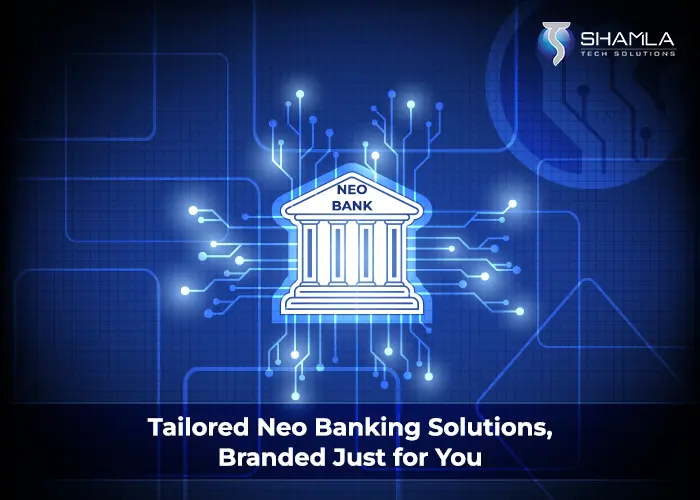
These days, banking is data-driven, and the majority of service delivery channels are digital. Neobanks have seized this opportunity, forming strategic alliances with banks, obtaining banking licenses, and developing into fully functional suppliers of branchless financial services. The main issue facing neobanks is that despite their fast proliferation, trust has not grown along with them. The bulk of customers still like banking in physical locations; they still require human contact to address concerns and provide explanations in the event of an issue.
However, the most common strategy is for these FinTech companies to enhance the user experience of their clients by layering themselves on top of established bank systems.
Startups have benefited greatly from this as several neobanks, such as Azlo, have partnered with BBVA in the USA to provide fee-free current accounts that are exclusively available online. They also hope to establish a network of firms with similar goals so that they may mentor and interact with one another and generate opportunities for one another.
“Coconut” offers small companies and startups a robust and easy-to-use accounting system that allows them to manage spending, create invoices, file tax returns, and do basic bookkeeping tasks all in one location. It seeks to free entrepreneurs from the burden of accounting and tax administration so they may concentrate on growing their companies.
The Finnish company Holvi offers a free Mastercard-branded card as well as a business account in collaboration with Mastercard. In essence, it is a supplier of payment services that uses Mastercard’s network to provide current accounts for small companies. Additionally, it provides a mobile application to make spending tracking and bookkeeping easier.
Neat’ is a money service provider and lender with headquarters in Hong Kong that specializes in business accounts for startup owners. It gives business owners the tools they need to keep an eye on their expenses, accept payments, and transfer money across borders.
What are the benefits of Neo banks?
- Low cost: White label neo banking development services offer low Credit risk, no physical branches, and less regulation make the startup costs of a new bank low, which boosts profits. There aren’t any monthly maintenance costs, in contrast to typical banks.
- Quick service: Customers can quickly, easily, and efficiently use the Neo Bank applications thanks to the tech. On a Neo Bank, lending and money transfers may be completed in a matter of minutes.
- Simple account creation: Unlike traditional banks, clients just need to follow a few easy steps to open an account with a neo bank.
Why is a Neo-bank better than a traditional bank?
White label neo banking development is different from traditional banks in numerous ways:
- No physical presence: Neobanks don’t have any physical locations that you can visit, in contrast to regular banks that have branches all over the place. Every option on your account may be managed via an app, and the complete infrastructure is available online.
Thousands of dollars may be saved on operations and other costs associated with operating physical sites by using this online-only business model.
Historically, traditional banks have operated physically, but in recent years, they have begun to invest more heavily in digital banking. Neobanks’ digital banking services are easier to use and more user-friendly than those provided by traditional banks.
- Neo banks are not regulated: Neobanks are essentially financial entities, despite their name. Traditional banks are required to hold banking licenses, which sets them apart from neobanks. Neobanks are exempt from regulation as regulatory organizations do not recognize them as formal institutions.
They use the money they’ve saved to provide clients better services for less money. A partial, full range, or specialized banking license may be held by some neobanks. Neobanks are able to provide a wide range of financial services with a banking license.
What is the scope of FinTech app development in 2024?
In the white label neo banking development services there are various trends for Fintech app development;
- Integration with Blockchain Technology: To increase security and transparency, more FinTech apps are anticipated to include blockchain technology.
- Personalization and AI-Powered Features: More individualized financial advice is anticipated from AI-powered features like chatbots and virtual assistants.
- Extension of Open Banking: FinTech apps will keep utilizing Open Banking APIs to offer new value-added services.
- Increased Use of Biometrics: To enhance user security and convenience, biometric authentication techniques such as fingerprint scanning and face recognition will be used more frequently in FinTech apps.
How does API work in banking?
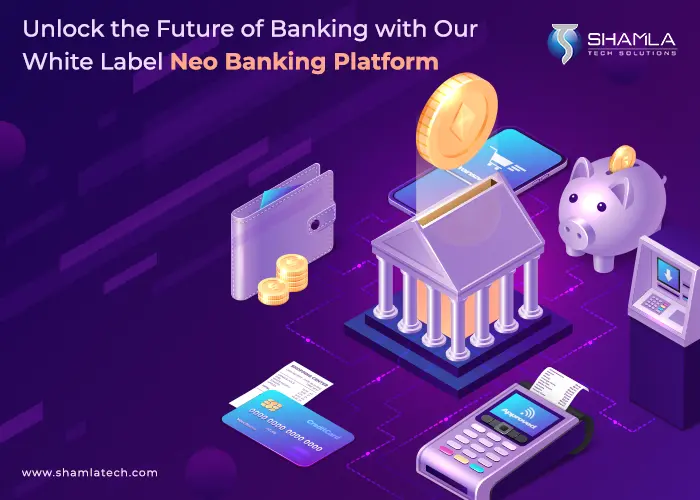
Before we answer the question of how API development works, we must understand what is API in banking in the white label neo banking development infrastructure.
Let’s first learn more about API technology as a whole. It serves as a link between the back-end, where the fundamental operations are carried out and the logic is kept, and the front-end, or simply “client-facing,” software program or interface, which is intended for direct access and usage by end users. Since an API’s interactions and the front-end component that grants access to it convey a company’s name, offerings, or goods to customers, its design prioritizes the user experience.
Web and mobile platforms are king in the financial business. Software solutions for both often need integrated APIs to function. Let’s define this technology specifically:
An API is a set of guidelines, procedures, and instruments that facilitates communication and multitasking across different software systems. Let’s go a little farther and combine the idea of API with the banking industry now.
A supplier of banking APIs with a complete banking license is one example. Its customer, Samsung, has a branded digital wallet and offerings enabled by Solaris banking API interface while not being a financial institution or possessing a banking license.
How can the unlicensed business provide banking services through a business that is fully licensed to provide banking services? The Samsung Wallet’s banking API integration allows for the following:
- Accept a request from a client to open a bank account. It’s possible that the client is unaware of which bank offers the service. However, in accordance with the Solaris API integration, the request will function as an order to enter a certain area of the bank system and initiate the account.
- Check the API key to validate the request.
- Read information from the bank or take actions, as in this case, creating a bank account, to commit data exchange.
- Following the bank’s processing of the request, the banking API notifies the consumer via response if the request was successful or unsuccessfully fulfilled and returns it to the Samsung Wallet.
It is vital to comprehend that the bank handles the back-end operation of processing requests. The bank opens the account in accordance with their protocol if that is the request. Alternatively, the bank’s system will carry out the transaction if the consumer wishes to transfer money.
How to build a centralized crypto exchange like Binance?
Apart from establishing a white label neo banking development service, you can build a centralized cryptocurrency exchange like Binance in the following steps;
- Perform Market Research: You must comprehend the market and the competitors before launching an exchange. Examine the functionality, user base, and trades that are now in place. Determine which characteristics the market lacks that you can provide.
- Create a Business Model Plan: Choose between a decentralized and centralized exchange when launching a new exchange. Establish your income streams, such as listing or transaction fees, and allocate funds for infrastructure, marketing, and development.
- Form alliances with independent banks and payment apps: Establish several collaborations with banks and other third-party payment applications to enable customers to purchase cryptocurrency or make deposits and withdrawals without facing any payment limitations.
- Test and Launch: Make sure your exchange software is reliable, safe, and operational before launching it by giving it a comprehensive test. After that, you may open your exchange and begin taking on new members.
- Promote Your Exchange: To draw in new users, promote your exchange after it has been launched. Increase your exposure and grow your user base by utilizing social media, paid advertising, and other marketing methods.
- Secure Licenses: In order to operate an exchange, you might need to secure the necessary legal licenses and permissions, depending on your country of operation. Licenses for money transfer, anti-money laundering, and know-your-customer laws are a few examples of this.
What's the best API for making a mobile banking app?
For developing a mobile banking app, there are several APIs accessible, each with unique features and benefits. Several well-liked choices consist of Plaid, Yodlee, and Finicity.
These APIs offer the ability to process payments, get transaction data, and establish connections to bank accounts. When selecting the ideal API for your project, it’s critical to thoroughly assess the unique requirements of your mobile banking app and take into account elements like security, compliance, and scalability.
What features are banks looking for in an open banking API?
Features that banks are looking for while establishing white label neo banking development services are;
- Evolve with the customer base:
Every industry must gradually change the products it offers. The younger clientele is more technologically aware and anticipates having mobile access to these financial goods. In actuality, the largest concentration of fintech clients is found in developing nations like China and India. It’s interesting to note that over 50% of banking clients use non-traditional businesses’ services.
Of the younger, tech-savvy demographic, 42.6% now use and want to continue utilizing non-traditional bank services. This consumer base may access financial solutions by fintech companies thanks to open banking APIs.
Consumers who are digital natives and frequent users of Amazon, Apple, Facebook, and other tech businesses have become accustomed to receiving their orders instantly.
- Positive customer experience:
Increased innovation is the primary driver of open banking API growth. Higher levels of good customer experience are the result of the fintech industry’s favorable accomplishments compared to banks.
These fintech companies have the option to concentrate on certain client problems. As a result, they are able to offer more seamless and personalized solutions. As a matter of fact, a third of all bank clients make use of services from outside vendors.
Fintech companies have recognized and developed relevant, appealing, and user-friendly financial products. Furthermore, scalability and good security contribute to a satisfying user experience.
Develop and optimize a white label neo banking development service:
